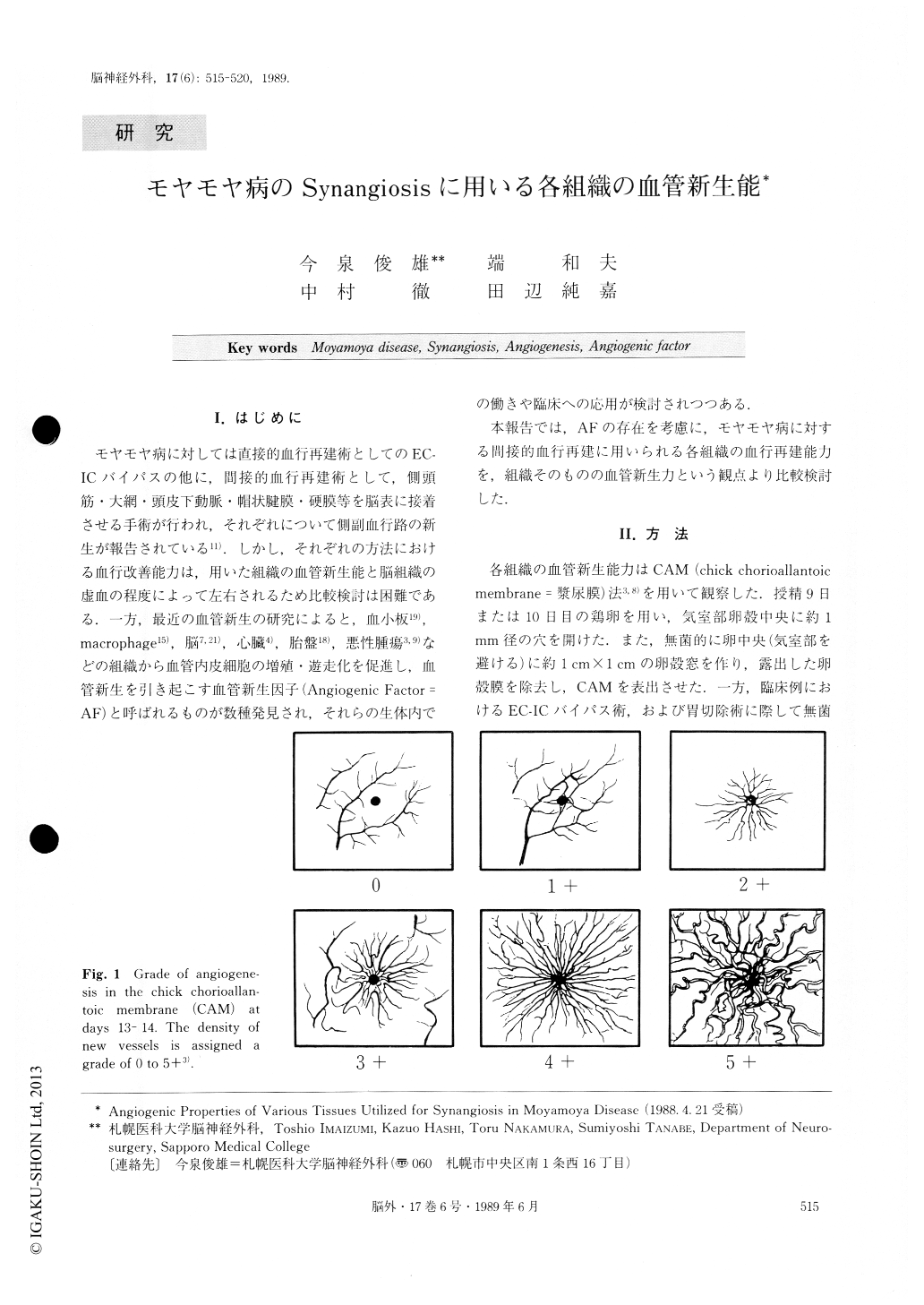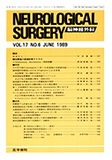Japanese
English
- 有料閲覧
- Abstract 文献概要
- 1ページ目 Look Inside
I.はじめに
モヤモヤ病に対しては直接的血行再建術としてのEC—ICバイパスの他に,間接的血行再建術として,側頭筋・大網・頭皮下動脈・帽状腱膜・硬膜等を脳表に接着させる手術が行われ,それぞれについて側副血行路の新生が報告されている11).しかし,それぞれの方法における血行改善能力は,用いた組織の血管新生能と脳組織の虚血の程度によって左右されるため比較検討は困難である.一方,最近の血管新生の研究によると,血小板19),macrophage15),脳7,21),心臓4),胎盤18),悪性腫瘍3,9)などの組織から血管内皮細胞の増殖・遊走化を促進し,血管新生を引き起こす血管新生因子(Angiogenic Factor=AF)と呼ばれるものが数種発見され,それらの生体内での働きや臨床への応用が検討されつつある.
本報告では,AFの存在を考慮に,モヤモヤ病に対する間接的血行再建に用いられる各組織の血行再建能力を,組織そのものの血管新生力という観点より比較検討した.
In order to evaluate the adequacy of materials util-ized for synangiosis in Moyamoya disease, angiogenic activities of various human tissues were examined. Tis-sue samples were freshly obtained at operation. A small piece of the sample was placed on the chick chorioal-lantoic membrane (CAM), and, using an operative microscope, the production of neovascularization was evaluated 96 hours later.

Copyright © 1989, Igaku-Shoin Ltd. All rights reserved.


